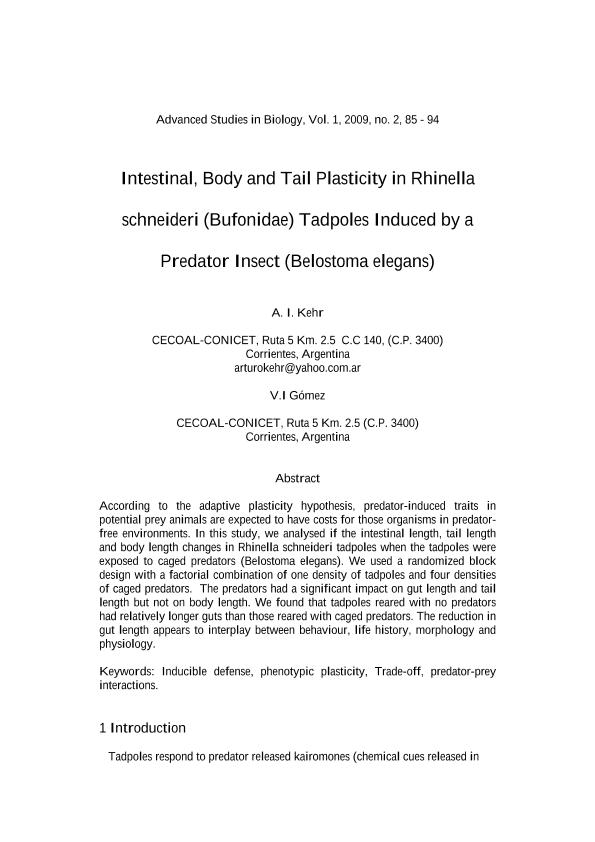Artículo
Intestinal, Body and Tail Plasticity in Rhinella schneideri (Bufonidae) Tadpoles Induced by a Predator Insect (Belostoma elegans)
Fecha de publicación:
04/2009
Editorial:
Hikari Ltd
Revista:
Advanced Studies in Biology
ISSN:
1314-7668
Idioma:
Inglés
Tipo de recurso:
Artículo publicado
Clasificación temática:
Resumen
According to the adaptive plasticity hypothesis, predator-induced traits in potential prey animals are expected to have costs for those organisms in predatorfree environments. In this study, we analysed if the intestinal length, tail length and body length changes in Rhinella schneideri tadpoles when the tadpoles were exposed to caged predators (Belostoma elegans). We used a randomized block design with a factorial combination of one density of tadpoles and four densities of caged predators. The predators had a significant impact on gut length and tail length but not on body length. We found that tadpoles reared with no predators had relatively longer guts than those reared with caged predators. The reduction in gut length appears to interplay between behaviour, life history, morphology and physiology.
Archivos asociados
Licencia
Identificadores
Colecciones
Articulos(CECOAL)
Articulos de CENTRO DE ECOLOGIA APLICADA DEL LITORAL (I)
Articulos de CENTRO DE ECOLOGIA APLICADA DEL LITORAL (I)
Citación
Kehr, Arturo Ignacio; Gómez, Valeria Isabel; Intestinal, Body and Tail Plasticity in Rhinella schneideri (Bufonidae) Tadpoles Induced by a Predator Insect (Belostoma elegans) ; Hikari Ltd; Advanced Studies in Biology; 1; 2; 4-2009; 85-94
Compartir
Altmétricas




